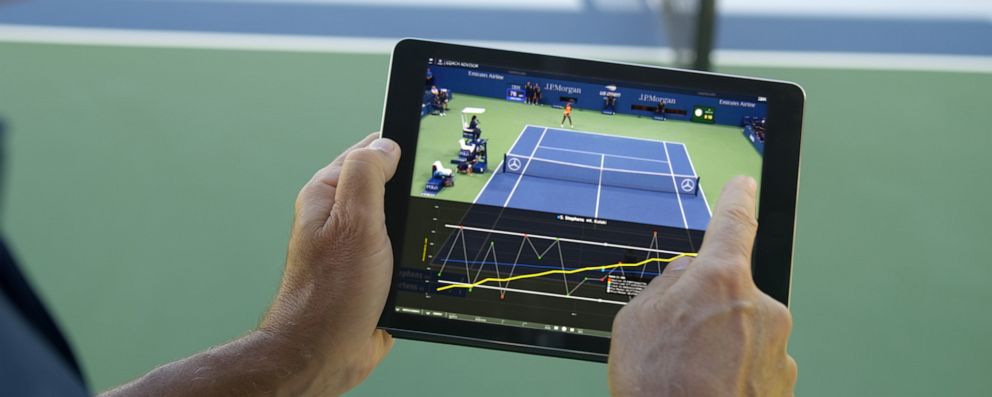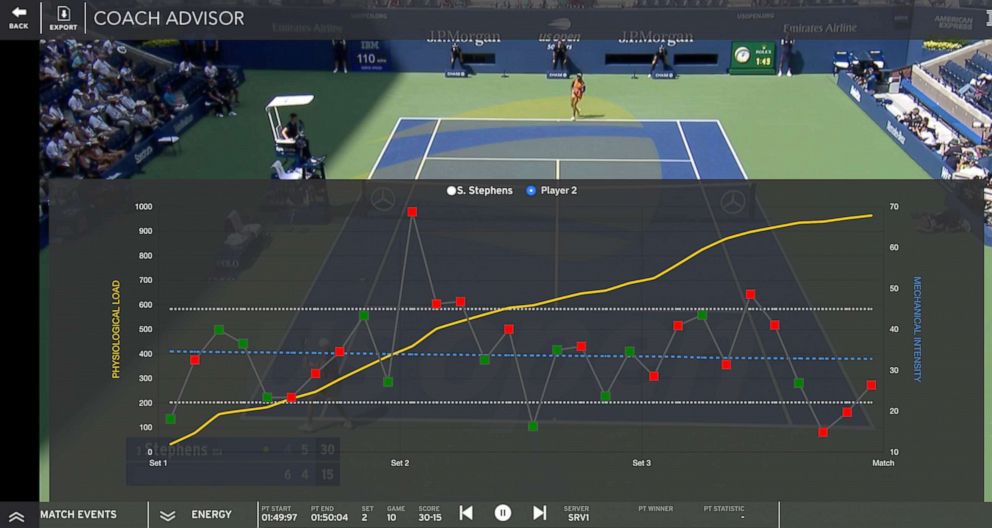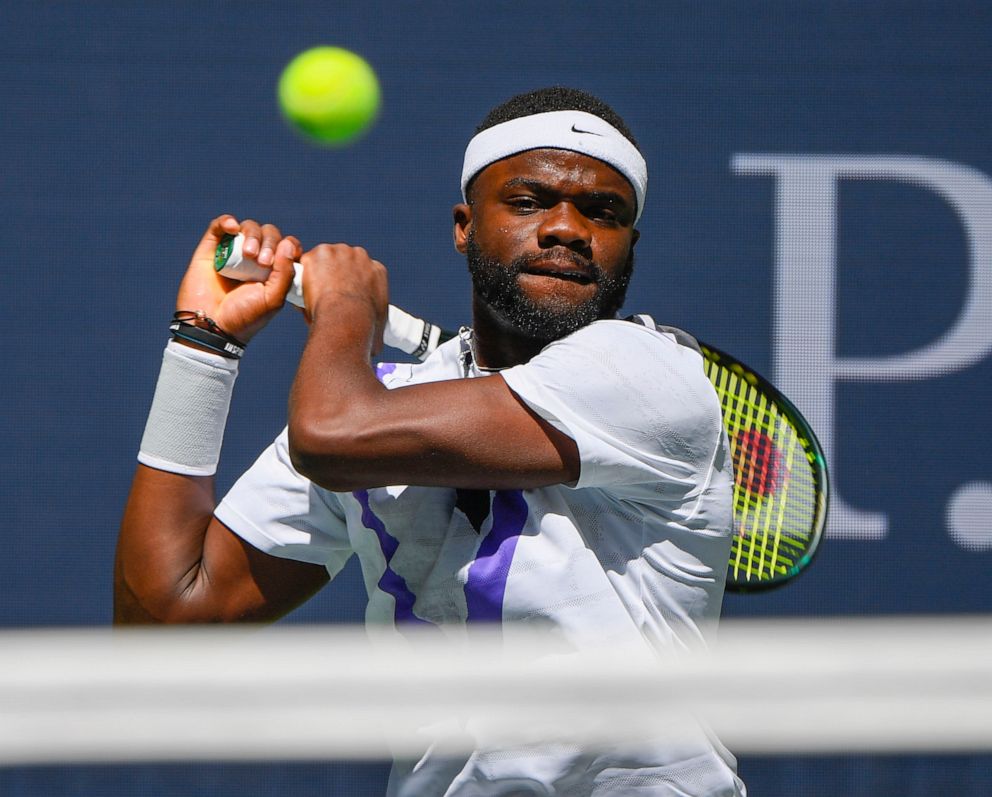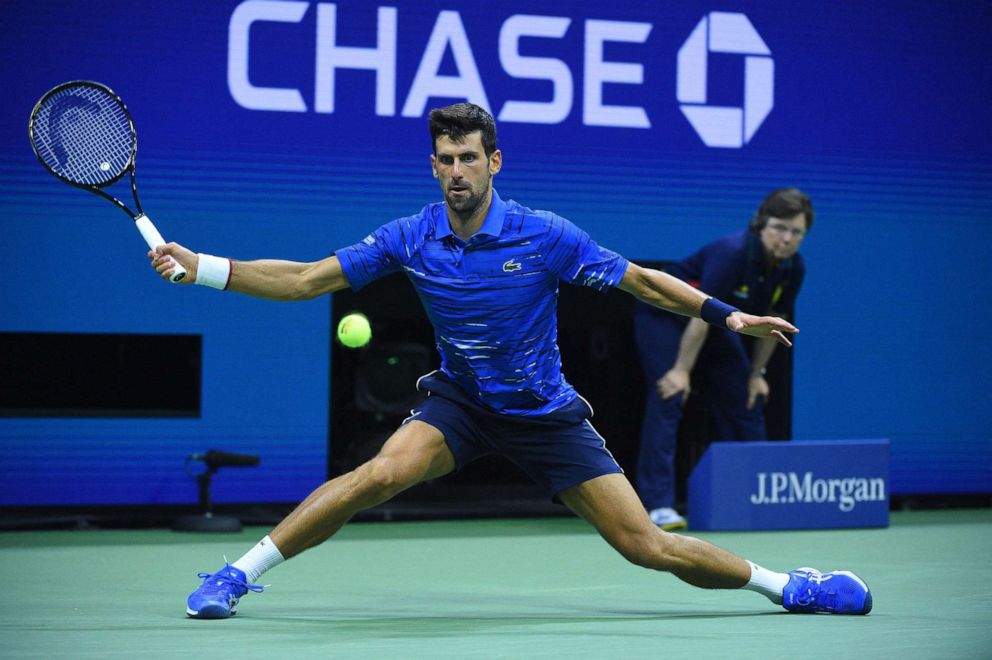IBM introduces new tennis tool to make the next Sloane Stephens at the US Open
Coach Advisor analyzes players' energy use during a match.
With its lights and retractable roofs, the U.S. Open is a beacon of technological progress in the tennis world, and IBM is looking to push that further with its newest innovation.
This week, in the midst of the two-week tournament in Queens, New York, IBM, in partnership with the United States Tennis Association (USTA), introduced Coach Advisor, which they hope to be a game-changer for American athletes.
"This is a brand new thing that is built on all the work we've been doing with the U.S. Open for almost 30 years," Elizabeth O'Brien, program director for sports and entertainment partnerships at IBM, told ABC News at the company's hub underneath Arthur Ashe Stadium, the main court for the tournament.

Essentially, IBM takes videos of matches, indexes them -- marking start points and stop times and traditional tennis statistics like scores -- and then looks at player movement, like changing direction and bursts of speed.

From there, O'Brien explained, "We were able to develop two metrics that have never been used before around what we call player energy systems."
It's going to contribute to the next generation of American champions. We really believe that.
Those metrics are mechanical intensity -- how much a player accelerates and decelerates and the demand that puts on a body -- and physiological load; that is, how much effort a player put in during a match, determined using their height, weight, average speed and moved distance at different speeds.
Basically, it helps athletes and their training teams to see when they're using the most energy and, potentially, how they can play more efficiently and to their endurance strengths.

"Then we're going to be able to work backwards and make changes in their training plan. Were they fit enough, are they fit enough to play the way their coach wants them to play? Are they fit enough to come back after a really tough match and play another one?" Martin Blackman, general manager of USTA player development, told reporters at the Billie Jean King National Tennis Center.
IBM is already working with American stars Sloane Stephens and Frances Tiafoe -- neither of whom advanced to the third round of this year's U.S. Open -- to test out Coach Advisor, using them to understand how best to introduce the program to players to the best effect.

The plan is to roll it out to more players, largely through the USTA's player development work. Otherwise, for non-American players and those outside of the USTA's purview, high-level scouting and analysis of any kind on both your own playing and that of other players can be pricey, stretching up from five to six figures for those who can afford it.
With that, the program stresses a long-held issue in the sport: unless you're a highly ranked player, tennis -- and the newest assets to improve your game -- can be financially inaccessible without institutional support.
And in an age where the top players are older and matches can get longer even with new tiebreak rules -- consider July's Wimbledon final between Novak Djokovic, 32, and Roger Federer, 38, which stretched on for five hours -- the strategic use of energy can be a game-changer.

As David Ramos, manager of coaching education and performance at USTA, explained to reporters: The player and their team can use Coach Advisor to evaluate "are they taking enough time between points, are they managing changeovers, how are they doing in between matches in terms of basically getting themselves ready to play?"
It's one more example of the ways technology has the potential to change sports, all in a time when athletes don't just have new technology and advanced statistics in front of them, but actively utilize those tools to improve their game.
"It's going to contribute directly to the level of coaching in this country," Blackman said. "It's going to contribute directly to the way we're able to optimize training for our players, and it's going to contribute to the next generation of American champions. We really believe that."




